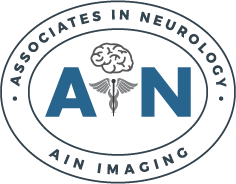Stroke
A stroke is one of the most serious neurologic medical emergencies – and for good reason. It occurs when blood supply to part of your brain is interrupted or reduced, preventing brain tissue from getting vital oxygen and nutrients, causing brain cells to die within minutes.
The good news is that early action can reduce brain damage and other complications. Effective treatments, such as those available at Associates in Neurology, can also help prevent disability from stroke.

Signs and Symptoms of a Stroke
These include:
- Difficulty speaking and understanding what others are saying. You may experience confusion, slur your words, or have trouble understanding speech.
- Sudden paralysis or numbness of the face, arm, or leg. Often, this affects one side of your body. If you attempt to raise both of your arms over your head at the same time and one arm start to fall, you may be experiencing a stroke. One side of your mouth may droop, as well.
- A problem seeing with one or both eyes. You may have blurred or double vision.
- Sudden, severe headache. This may be accompanied by vomiting, dizziness or altered consciousness.
- Difficulty walking. You may lose your balance and stumble, along with sudden dizziness or a loss of coordination.
Causes and Types of Stroke
There are two main categories of stroke:
- Ischemic strokes are caused by blockage of an artery. This accounts for about 87% of all strokes.
- Hemorrhagic stroke is the result of a ruptured blood vessel that cause within the brain.
Diagnosing a Stroke
- A physical examination. Your doctor conducts a number of preliminary tests, such as listening to your heart and checking your blood pressure. Next, you undergo a neurological exam to determine how a potential stroke is affecting your nervous system.
- Blood tests. These are designed to check how fast your blood clots, your blood sugar level, and whether you have an infection.
- Computed tomography (CT) scan. A CT scan provides a detailed image of your brain that can indicate bleeding in the brain, an ischemic stroke, a tumor, or other conditions. The doctor may inject a dye into your bloodstream in order to view the blood vessels in your neck and brain in greater detail.
- Magnetic resonance imaging (MRI). Using powerful radio waves and magnets to create a detailed view of your brain, an MRI can detect brain tissue damaged by an ischemic stroke and brain hemorrhages.
- Carotid ultrasound. Sound waves create detailed images of the inside of the carotid arteries in your neck and can help identify a buildup of fatty deposits (plaques), as well as issues with your blood flow within those arteries.
- Cerebral angiogram. This less commonly used procedure involves the insertion of a thin, flexible tube (catheter) through a small incision, usually in your groin, which is then guided through your major arteries and into your carotid or vertebral artery, where your doctor injects a dye into your blood vessels, so they are visible under X-ray imaging and provide a detailed view of arteries in your brain and neck.
- Echocardiogram. This test uses sound waves to create detailed images to the heart’s valves and chambers to identify blood clots or problems with the heart’s ability to pump blood through the body.
All of these imaging diagnostic techniques can also detect tumors of the nervous system that may have triggered – or are at risk of triggering – a stroke.
Prevention and Care for Stroke in Southeast Michigan
As a state-of-the-art facility, Associates in Neurology offers a wide range of diagnostic and effective treatment options to prevent or recover from a stroke. If you suspect you or a loved one has had a stroke, BE FAST to ensure the best possible outcome.
To learn more, contact us today at (248) 478-5512 and schedule a consultation at one of our convenient locations in the greater Detroit area. Or, if you prefer, use our secure, online Request an Appointment form to arrange your visit.


